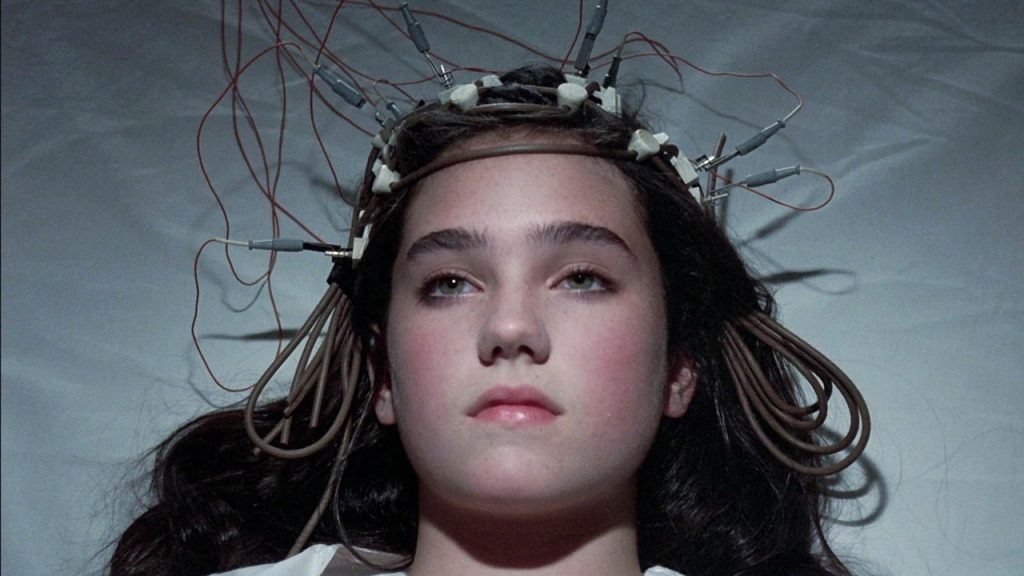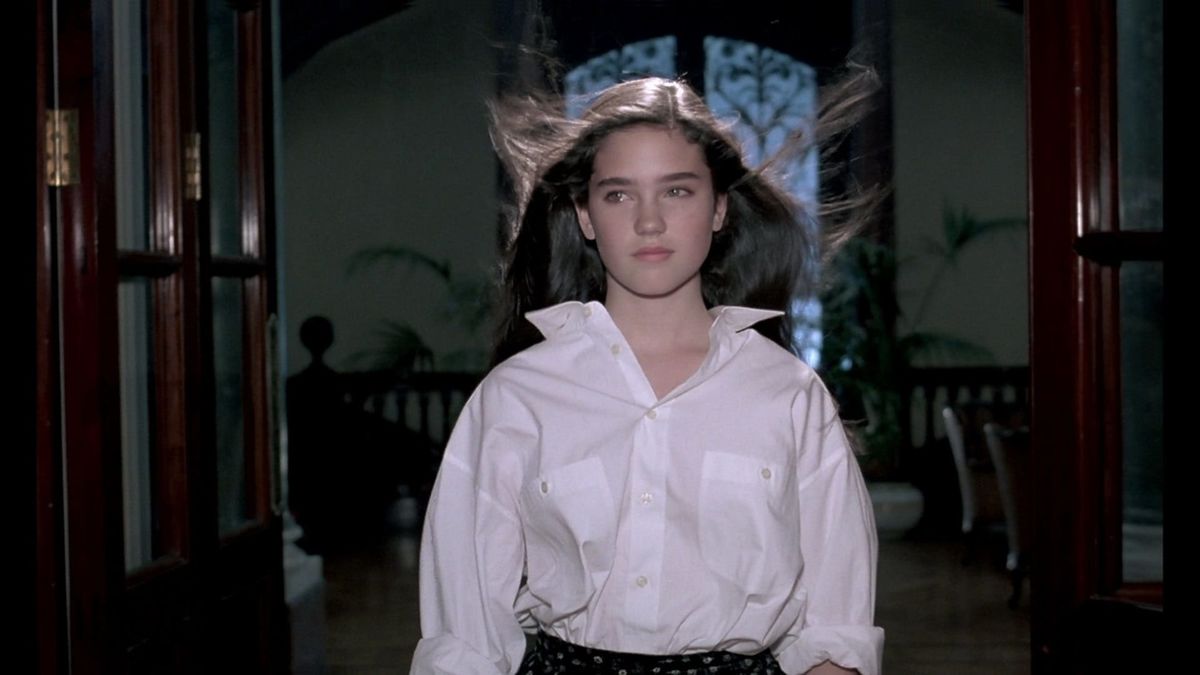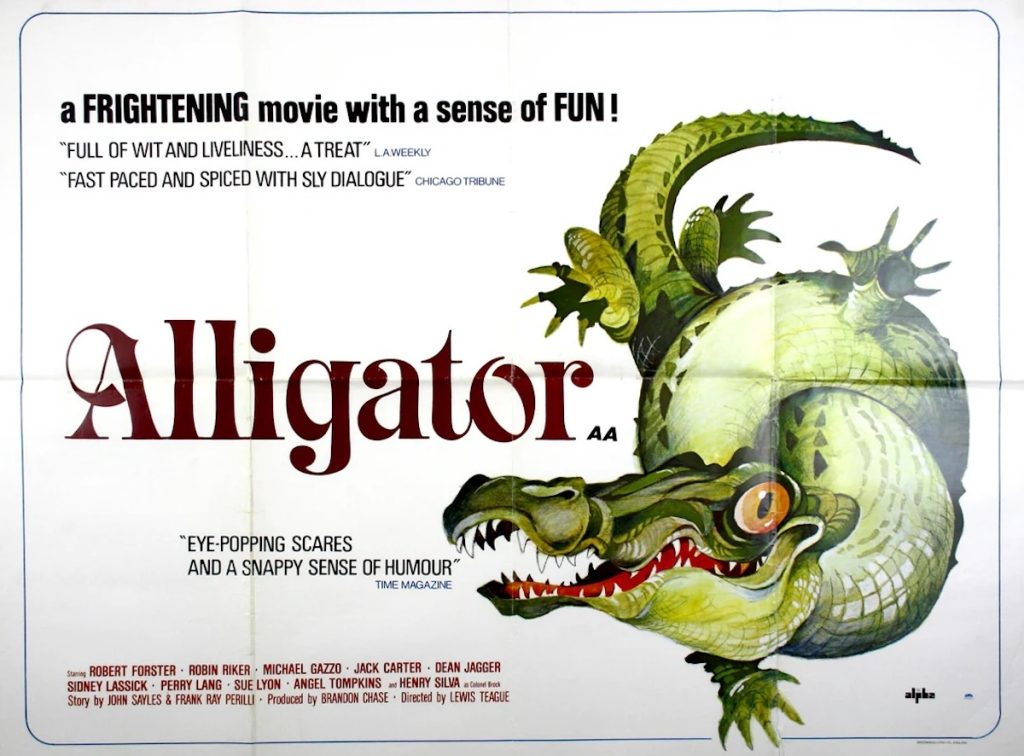No director is more synonymous with a genre than Dario Argento is with giallo.
The Italian filmmaker was not the progenitor of gialli (’yellow’ in English, named for the background covers of the popular crime and pulp novels they were initially adapted from) but he, along with paisan Mario Bava, defined their style and mood. Even more than Bava though, Argento’s run of giallos—starting with 1970’s The Bird with the Crystal Plumage (his directorial debut) through 1987’s Opera—are rightly regarded as the genre’s high water mark, even if there is much argument amongst horror nerds whether his most iconic and beloved work, Supsiria (1977), should count as one.
Ultimately, that is a pointless argument, because more than what would come to later be known as giallo, Argento’s films operate on the logic of two different categories: fairy tales and dreams. And in no film did he take these influences to their illogical extremes than in Phenomena, which turns 40 years old this August.
Mixing the more traditional murder mystery elements of traditional gialli with the supernatural drama of his Three Mothers trilogy (Suspiria, Inferno, The Mother of Tears) Argento creates a movie that, even by his usual batshit standards, flies by the seat of its pants.
Like Suspiria, Phenomena takes place mostly within a feminine hothouse–in this case, a girl’s boarding school in the Swiss countryside. Fourteen-year-old American Jennifer Corvino (Jennifer Connelly, only one year removed from her acting debut in Argento’s former mentor and screenwriting partner Sergio Leone’s Once Upon a Time in America), the daughter of a famous actor, arrives at the school amidst a string of brutal decapitations of young girls. As if a new school and mortal danger lurking nearby weren’t enough, she also suffers from episodes of sleepwalking and is coming to realize she holds a telepathic connection to insects.
These disparate threads lead to her meeting and befriending Professor John McGregor (genre icon Donald Pleasance), a kindly paraplegic entomologist-turned-forensic investigator who, along with his service chimpanzee Inga (a very troublesome cast member that, amongst other acts of misbehavior, actually bit poor Connelly), has a personal score to settle with the necrophile murderer who is now targeting Jennifer.

This all leads to the wildest climax in Argento’s oeuvre–and that is really saying something—about which what can be said other than there’s no vengeance like monkey vengeance? Along the way, Argento fills the story to the brim with his various obsessions and fetishes: prog rock and metal (courtesy of regular musical collaborators Goblin, but also featuring tracks from Iron Maiden and Motorhead), razor blades and scissors, creepy dolls, beasts and bugs, pseudoscientific mambo-jumbo, and lots and lots of blood and viscera (seriously, the scene in which Connelly get pushed into a pool of decomposing corpses is amongst the most stomach churning he’s ever given us, which again, is really fucking saying something).
Phenomena is less overtly sexual than most of his other films, which is for the best considering the age of his heroine and her school chums – though the film isn’t completely absent sex. There is one tease of nudity involved, but more than that, the newfound psychic powers experienced by the pubertal heroine are clear metaphors for her burgeoning sexuality. So too are the Freudian fairy tale tropes throughout the narrative, from the dark woodland setting to the communion with animals to the cast of supporting characters standing-in for any number of archetypes: evil stepmothers, wicked witches, impish changelings, wizened hermits, faraway princely fathers, and life-like automatons.
These elements, combined with Connelly’s lead performance, make Phenomena the dark doppelganger to Jim Henson’s much more family-friendly (but still subversive) Labyrinth of the very next year. But a more interesting double feature pairing would be Phenomena with Paul Verhoeven’s satirical sci-fi blockbuster Starship Troopers (1997).
On the face of it, those seem like totally disparate movies, but they share a fascinating connective thread: Argento has claimed Phenomena takes place in a world in which the Nazis won WWII, and that if you go in knowing that, many little things start to click (such as the boarding school being named after Richard Wagner). While this doesn’t alter the film as drastically as the similar understanding of Starship Troopers as a Nazi propaganda film, it makes for an even wilder experience. (It might have proven wilder still, as Argento originally wanted Connelly’s character to be the daughter of Al Pacino. Pacino, unfortunately, nixed this.)
Upon release, Phenomena went through a couple different edits, including a hatchet job by American distributor New Line, who cut close to half an hour and released it to baffled and bored audiences and unimpressed critics under the new title Creepers. Luckily,over the past decade, the restored cut found its way to home video, first via DVD by Anchor Bay, and later on Blu-ray and 4K UHD Blu-ray by Synapse and Arrow, respectively. Since then, its reputation has likewise been restored, so that now it stands as a favorite amongst Argento devotees.
Forty years later, the phenomenon of Phenomena deserves to be experienced anew.
“Phenomena” is streaming on Shudder, Night Flight Plus, and several ad-supported streamers.



